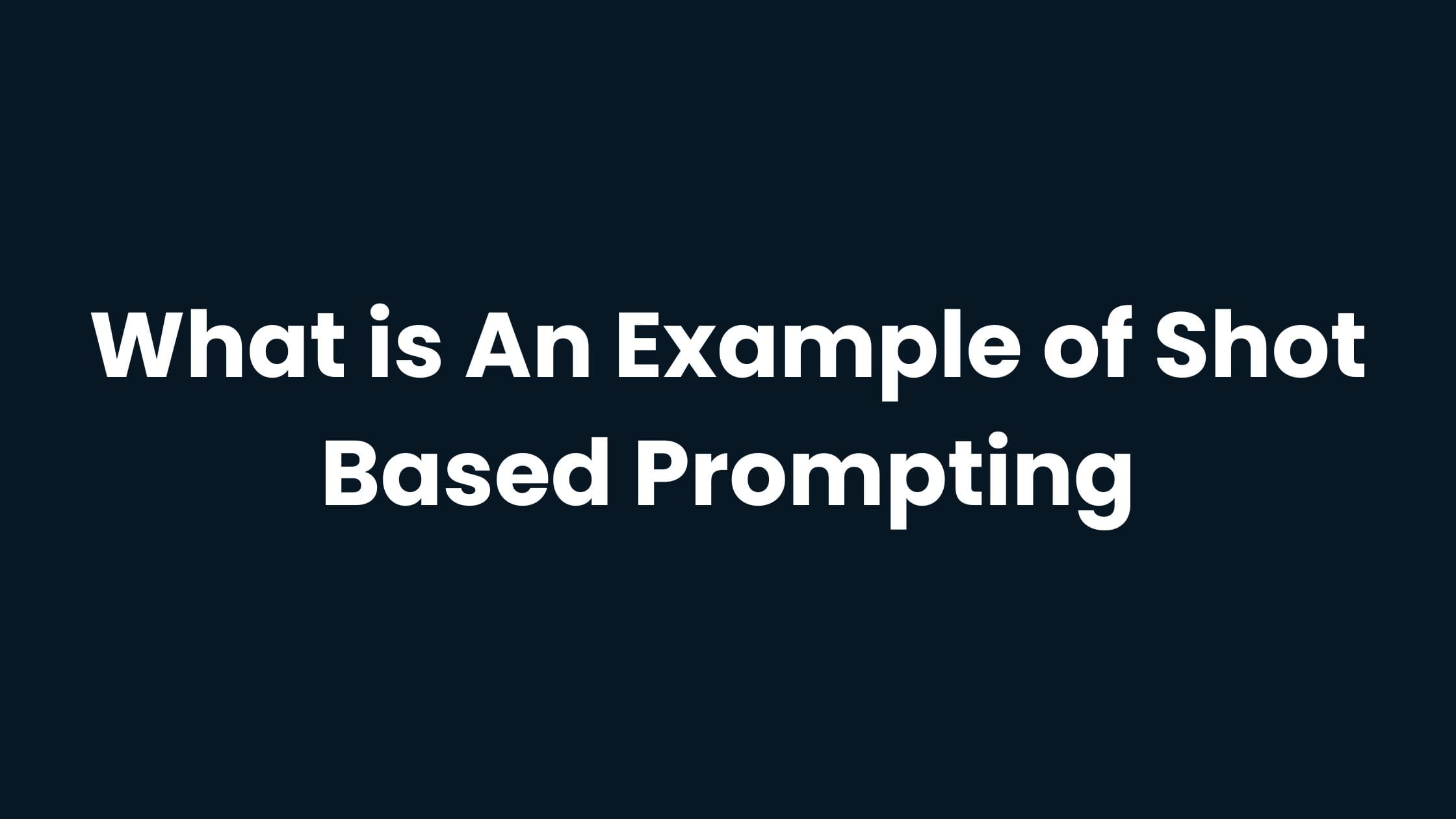Have you ever wondered what is an example of shot-based prompting? It’s a way to help AI understand and respond better to our questions by giving it different levels of guidance.
Shot-based prompting is like teaching a friend by example. You can show the AI nothing (zero-shot), one example (one-shot), or a few examples (few-shot) to get better results. For instance, showing AI one correct math solution helps it solve similar problems.
Ready to dive deeper? Let’s explore how shot-based prompting works in real life, see some practical examples, and learn when to use each type. Trust me, it’s simpler than you think!
Table of Contents
- What is Shot-Based Prompting?
- Zero-Shot Prompting: The Basics
- One-Shot Prompting: Learning from an Example
- Few-Shot Prompting: Multiple Examples in Action
- Choosing the Right Shot-Based Prompting Method
- Real-Life Applications
- FAQ’s
- Conclusion
What is Shot-Based Prompting?
Shot-based prompting is a way to talk to AI by giving it different amounts of examples. Think of it like teaching a new student:
- Sometimes you just ask them to try (zero-shot)
- Sometimes you show one example first (one shot)
- Sometimes you show several examples (few-shot)
It’s called “shot-based” because each example is like taking a “shot” at showing the AI what you want. The more shots (examples) you give, the better the AI understands your request.
For beginners, it’s helpful to think of shot-based prompting as giving directions:
- Zero-shot is like saying “Find the grocery store”
- One shot is saying “Find the grocery store – here’s how I found the post office”
- Few-shot is saying “Find the grocery store – here’s how I found the post office, bank, and library”
Zero-Shot Prompting: The Basics
Zero-shot prompting is when you ask AI to do something without any examples. It’s the simplest way to start!
When To Use It:
- For basic tasks
- When the request is straightforward
- If you’re not sure what examples to give
Real Example:
You: Translate "hello" to Spanish
AI: HolaRemember: Zero-shot works best for simple, clear requests. If you don’t get good results, try adding examples!
One-Shot Prompting: Learning from an Example
One-shot prompting means giving the AI one example before your main request. It’s like showing someone how to do something once, and then asking them to do a similar task.
How It Works:
- You give one example
- You make your actual request
- The AI uses the example to understand what you want
Simple Example:
You:
Input: The weather is nice
Output: El clima está agradable
Now translate: The food is delicious
AI: La comida está deliciosaThis shows the AI exactly how you want the translation done!
Few-Shot Prompting: Multiple Examples in Action
Few-shot prompting uses 2 or more examples before your request. It’s perfect when you need the AI to understand patterns or complex tasks.
Here’s a clear example:
You:
1. Input: I am happy
Output: 😊
2. Input: I am sad
Output: 😢
3. Input: I am surprised
Output: 😲
Now do: I am angry
AI: 😠Benefits of few-shot:
- Better accuracy
- Helps AI understand patterns
- Good for complex or specific tasks
Choosing the Right Shot-Based Prompting Method
Pick your method based on what you need:
| Method | When to Use | Example Task |
| Zero-shot | Simple, clear requests | Basic translations |
| One-shot | Need a specific format | Formatting addresses |
| Few-shot | Complex or pattern tasks | Writing code samples |
Tips for beginners:
- Start with zero-shot
- If that doesn’t work, try a one-shot
- Use a few-shot for tricky tasks
- Keep examples clear and relevant
Real-Life Applications
Shot-based prompting helps in everyday tasks:
1. Writing emails
- Zero-shot: “Write an email about a meeting”
- One-shot: Show one email format, and ask for another
- Few-shot: Show multiple styles for different situations
2. Coding help
- Zero-shot: “Write a Python hello world program”
- One-shot: Show one function, and ask for a similar one
- Few-shot: Show multiple coding examples for complex tasks
3. Language Learning
- Zero-shot: Simple translations
- One-shot: Complex phrases with context
- Few-shot: Understanding grammar patterns
FAQ’s
No! Start simple (zero-shot) and add examples only if needed.
Usually 2-5 examples. More isn’t always better!
Yes, but keeping examples similar usually works best.
Try different examples or break down your request into simpler parts.
Conclusion
In conclusion, Now you know all about shot-based prompting! Whether you use zero-shot for simple tasks, one-shot for specific formats, or few-shot for complex requests, you have the tools to talk better with AI.
Remember, start simple and add examples only when needed. It’s like teaching a friend – sometimes they get it right away, and sometimes they need a few examples to understand.
Don’t be afraid to try different approaches. With practice, you’ll quickly learn what works best for different situations. Happy prompting!

